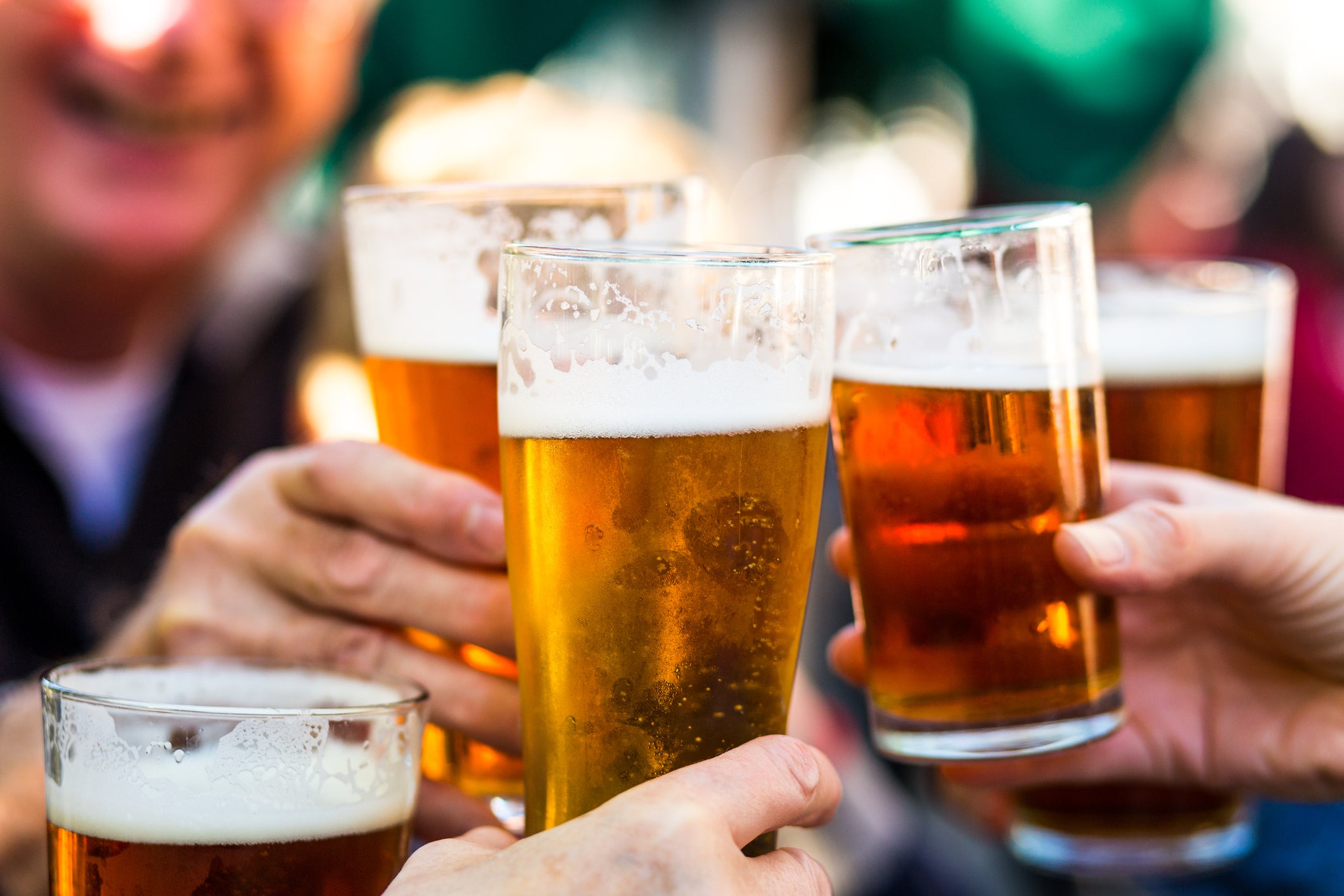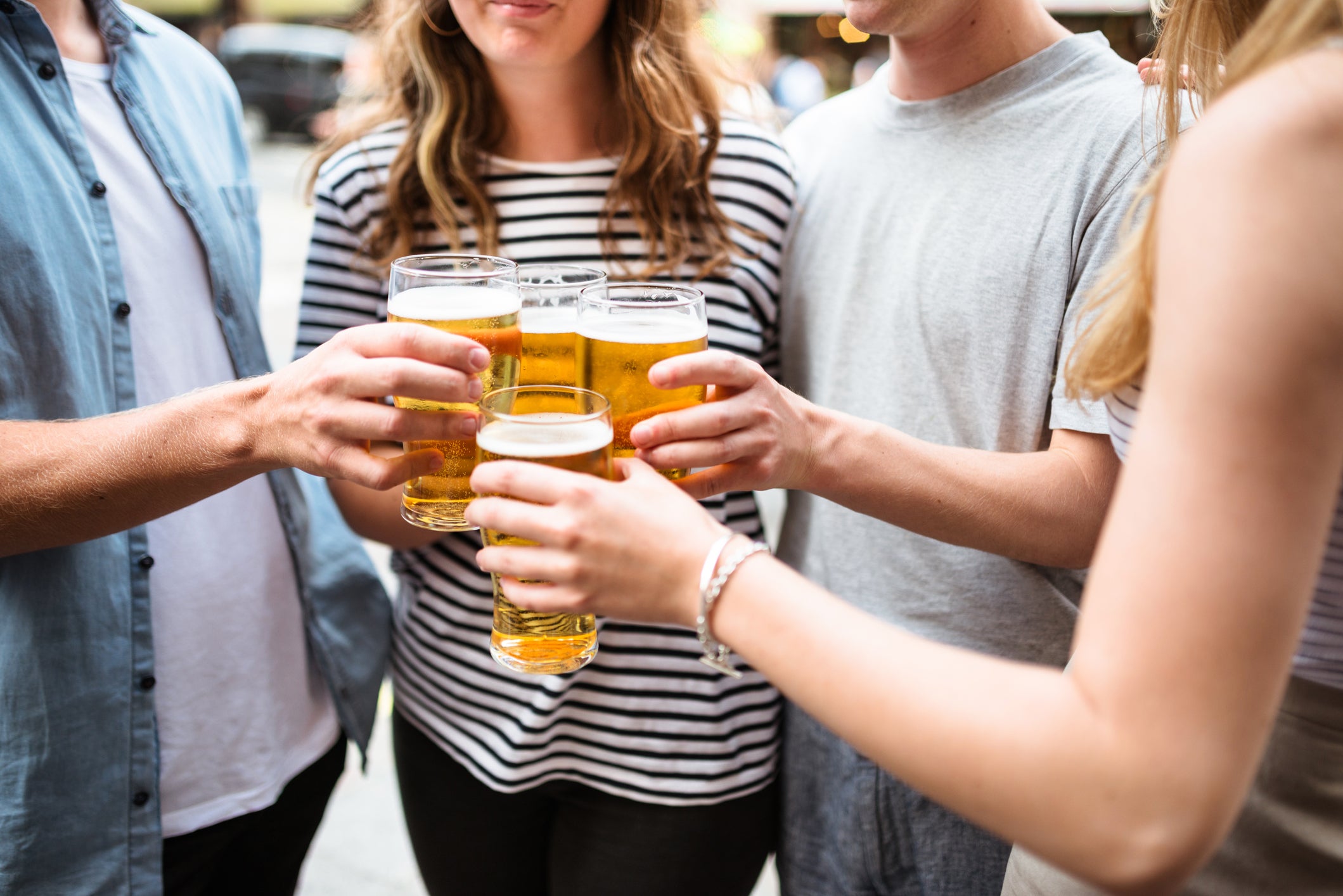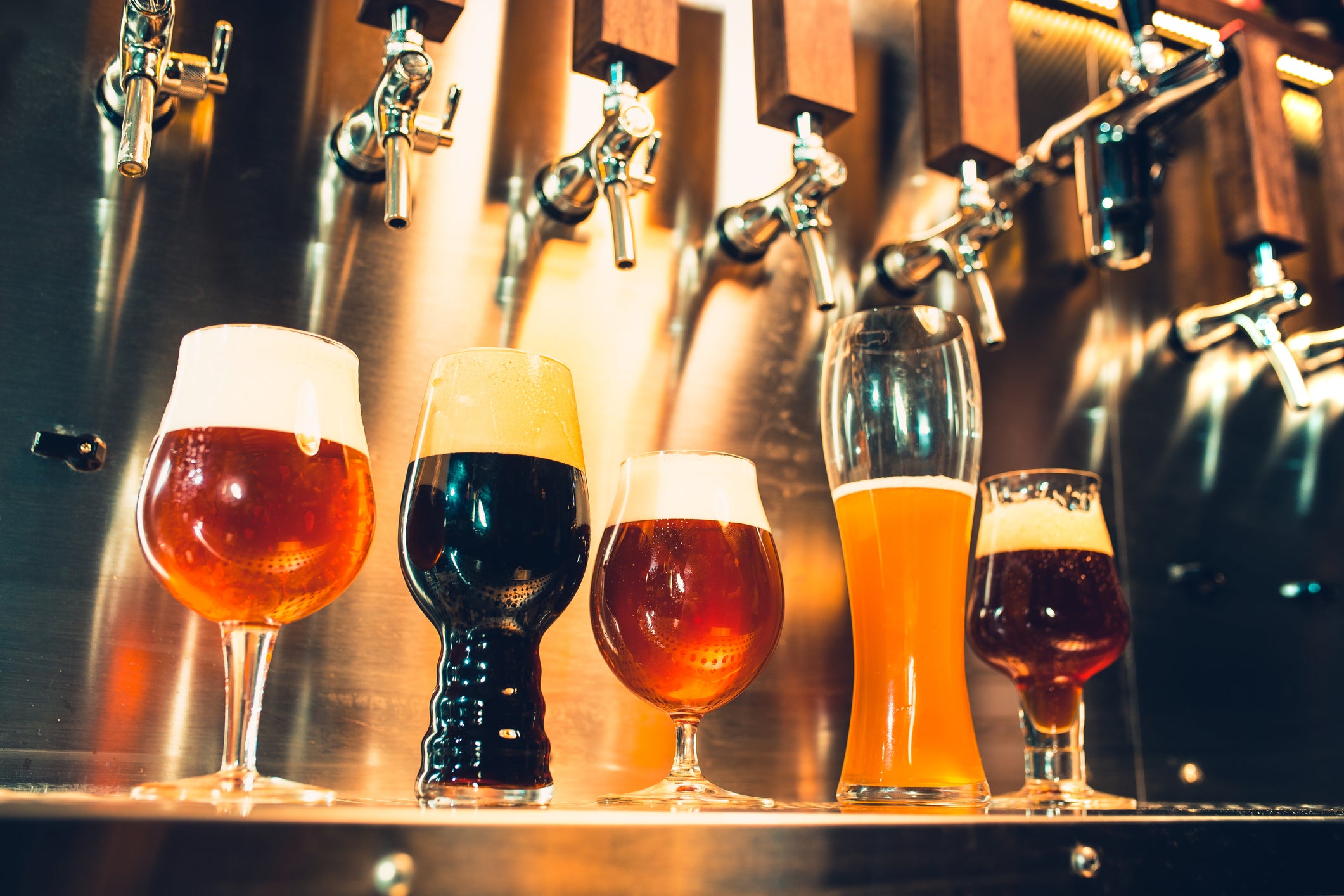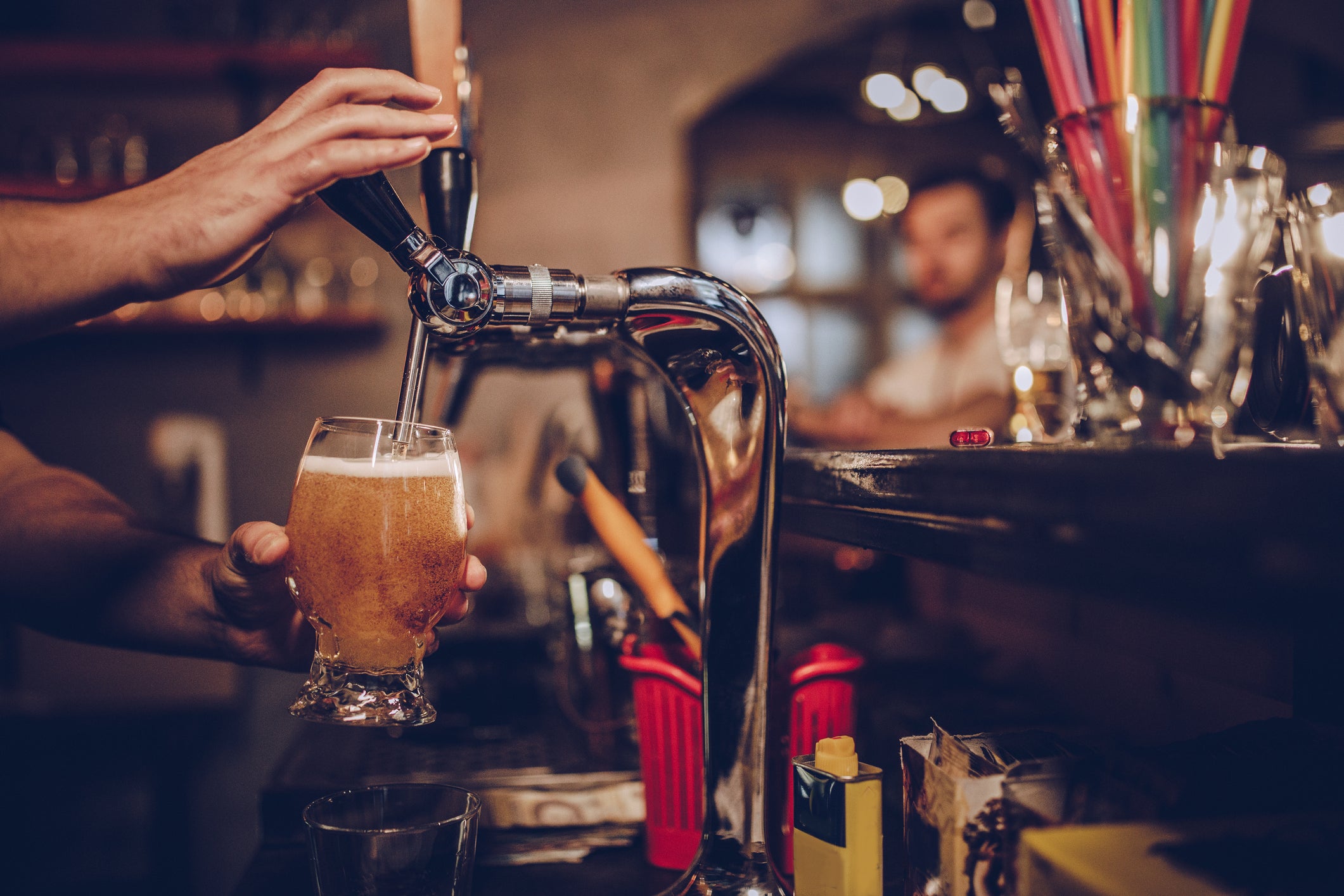18 beer terms you need to know to impress your friends at the pub
How to know your worts from your malts

Stepping into a pub and having to quickly choose from a list of craft beers, stouts and lagers at the bar as your friends wait impatiently to order can be a pretty intimidating moment.
From our recollection, the differences between a pilsner and a porter weren’t taught in the G.C.S.E curriculum (if only) and university days, more often than not, involved £1 shots of Jägerbombs and VS fruity mixers than microbrewery-sourced ales.
Unless you regularly drink pints with your friends or have an encyclopaedic knowledge of the beery industry, the majority of us are left to winging it when it comes to understanding beer-related terminology.
“A decade ago, there wasn’t the same amount of variety of beers and brands in pubs, supermarkets, and bars on offer as there is now,” says Dav Eames, bar manager at chef Marcus Wareing’s restaurant Tredwells Seven Dials in London.
As a result of the increased variety of beers, he says it’s no wonder that people easily find themselves intimidated by “complicated” alcohol acronyms and beer terminology.
“In the past, the majority of beers you’d buy were European lagers but increasing inquisitiveness among consumers who want to experiment with their palettes has seen the growth in popularity of craft beers and a whole spectrum of drinks on offer that bring with them a new lexicon.”

Jesse Wilson, founder of British fruit lager Jubel, agrees, adding that evolving beer styles “have pushed hop and ABV levels to become fairly challenging styles to drink”.
While this has captivated a small crowd of beer aficionados, he says it has made some people “put off by the subject of beer because the majority don't actually like drinking it”.
But that might be about to change as, on Friday 2 August, the world will come together in honour of International Beer Day.
The day, which is widely believed to have started in Santa Cruz, California, is celebrated on the first Friday of every August by beer lovers across the world to toast brewers, bar tenders, and, of course, the alcoholic beverage itself.
To mark the occasion, here’s a list of beer terms you need to know if you want to sounds like a connoisseur at the bar this weekend:
Worts
No, this isn't the small lump of skin known by the same name (spelt wart). A wort is how all beers start out.
“Wort is the liquid resulting from the mashing of the malted barley at the start of the brew process,” Wilson tells The Independent.
For beer, hops and yeasts are added to the wort prior fermentation, explains Matthieu Longuere, Le Cordon Bleu’s master sommelier and wine development manager.
“The yeasts will transform the sugar in the wort into alcohol and produce the CO2 that render beer sparkling,” he adds.
Session beer
US Craft brewery company Catawba defines session beers as light beverages “packed with flavour” that have a low alcohol content in the 3-4 per cent ABV (alcohol by volume) range.
“The popularity of the session beer lies in its superb drinkability, allowing multiple pints to be consumed in a reasonable timeframe without becoming overly intoxicated or overwhelming your palate with too much of one flavour characteristic,” the company’s website explains.

Eames adds that the term “session beer” most likely came from slang as it’s easy of drinking makes it “sessionable”.
High gravity beer
While you might have the feeling of floating in space after a few too many beers, when it comes to the beverage’s gravity, it has nothing to do with energy and forces.
In a beer context, gravity refers to the density of beer measured before and after fermentation.
A high gravity beer is normally brewed with a higher density of wort compared to water which ultimately results in a higher ABV, and is therefore stronger than low gravity beers, otherwise known as sessions.
“It is a way for the industrial lager producers to save on tank space and therefore reduce the cost of production,” notes Longuere.
“Other ways of reducing the cost of production are: adding sugar coming from corn, rice of beet to replace malted barley; centrifugation and chill filtration of the beer to clarify the beer (ice beers).
“It makes for much faster production.”
Attenuation
You might pay a lot of attention to how much of a head a bartender leaves on your beer at the bar but attenuation is a whole other ball game.
Wilson says attenuation refers to “the conversion of sugars into alcohol and C02 during the brewing process.
“The greater the attenuation, the more sugars have been converted into alcohol and the dryer the beer is.”
Filtering
Filtered beer is when the sedimentation of yeast, hops, malt particles, barley and any microbes that are used in the beer brewing process is removed.
“It produces a more consistent product and prevents refermentation in the keg or the bottle,” explains Longuere.
Ale
Ales are sold throughout the world and are widely known as being a malt beverage commonly brewed with barley malt and fermented at a high temperature (10°C to 25°C) using top fermenting yeast strains.
“It tends to produce beers with more body, more complexity and sometime more surprising flavours,” explains Longueure, adding that it is difficult to produce this style consistently.
They are generally produced for shorter durations and come in a variety of colours and strengths.
Describing the taste of ales, Wilson says: “They are fairly bitter, darker in colour, and stronger in taste than a lager.”
Lager
Unlike an ale, lagers are usually brewed at cooler temperatures (7°C to 15°C) that ales.
“It’s the most common and consumed style of beer,” says Wilson. “It is a heavily carbonated, light, golden beer with a malt character,” he adds, referencing Carling and Carlsberg as some common lagers in the beer market.
Longuere notes that the fermentation of a lager “takes longer, produces more alcohol, more gas and cleaner more neutral flavour.

“It needs a little bit more resting time to naturally settle the dead yeast before being commercialised. It is easy to get a consistent brew and therefore can be produced in much larger quantities than ale. The alcohol is typically higher than ale.”
Hops
To put it simply, hops is a climbing plant (think of it like a grape vine) which is also known by its Latinate botanical name Humulus lupulus.
In beer brewing, experts use the female ripened hops flower to add flavour and aroma to beer, Craftbeer.com explains. Hops are added at several stages of the beer-making process: beginning (bittering hops), middle (flavouring hops), and end (aroma hops) during the boiling stage and brewing process (dry hops).
Wilson says hops provide the bitterness and aroma in beers. “They are grown all around the world and vary greatly in taste and aroma but commonly have citrus fruit or piney aromas,” he explains.
“The use of hops is very popular in IPA styles of beer,” adds Eames.
Lambic
This is a type of beer that is spontaneously fermented and brewed from malted barley and unmalted wheat.
“It’s pretty a sour beer style that is often brewed with fruit,” explains Wilson.
The style of brewing is particularly popular in Belgium and is the indigenous beer of Brussels and the rural Senne River Valley, according to All About Beer magazine.
“According to brewing documents, lambics are essentially unchanged in the past 500 years,” the magazine states.
“They are brewed from roughly one-third unmalted wheat and two-thirds very pale malted barley, use aged hops and, of course, employ wild fermentation.”
Malt
Longuere says that malt is a grain of barley that has been germinated to free enzymes that help to transform the starch into maltose (sugar).
“To prevent the growth of a plant, the process is stopped by heating the malt as soon as the transformation as been operated,” he explains, adding that the colour of the beer will depend on how long the grain have been heated up for.
“A pale beer malt will have been heated up at very hot temperature for a short period of time. The more copper coloured one will have been heated up for longer at lower temperature. The darker the malt, the more caramelised or burnt flavours will the beer have.”
Stout
“You’d recognise a stout by its colour,” says Eames. “It’s dark, with the most commonly recognised stout being Guinness.
The alcohol expert says that the drink is “malty but not necessarily bitter”, adding that often stouts are preceded by the word “imperial” which means it’s a strong beer of approximately 7-8 per cent.
“The drink tastes almost burnt, hence the very specific flavour profile and love and hate relationship that most people have with this style of beer,” says Longuere.
Draught
If all else fails, just remember that draught is the opposite to bottled.
“Draught beer is that which is served from a keg,” explains Wilson. Meanwhile, packaged beer is usually served in bottles or cans.
Pilsner
It’s easy to get pilsners confused with lagers, as it originates from the latter, says Eames.

“It’s a light style of beer, originating from Eastern Europe which resembles a lager insofar that it is crispy, effervescent and light,” he says, noting that its usually around 4-5 per cent.
Longuere adds that the original paler lager took its name after the Bohemian town of Pilsen, in Czech Republic.
“Pilsner Urquell was the first recorded Pilsner brewed in 1842,” he says. “It is now a style replicated all around the world but the best ones will use Czech hops to bring out the historical flavours.”
Porter
While porters and stouts may look very similar, Wilson warns that it’s important to remember that to make a porters, brewers use malted barley.
“Meanwhile, stouts are made using unmalted barley,” he notes, while Longuere describes porters as “the London born ancestor of stouts”.
Bitter
Walk into any British pub and you’ll sound immediately local when asking for a bitter. Why? “Because it’s a traditional British style of a pale ale,” says Wilson. “For example, everyone has heard of it being used in the phrase ‘a pint of your finest bitter’.”
According to the National Beer Wholesalers Association in the US, a bitter is a well-hopped beer which is similar to a pale ale. The biggest difference between the two is that bitters are normally served on draught while pale ales are often bottled.
“They are usually served from a cask at cellar temperature of 10°C,” states Longuere. “They tend to be also less fizzy than lager because the CO2 is provided by the yeast still being active in the cask and therefore never carbonated. In a pump, they are recognisable by the pump used to pour them.”
Saison
This is pale ale that is highly carbonated and often has a slightly different and distinct taste profile, says Wilson.
“It often has a fruity or spicy taste,” he states, with Eames adding that a saison beer often has a mouth-watering effect given its citrus, sour element.
With temperatures fluctuating in the UK this summer, the bar manager predicts this “summer” beer will increasingly become popular beer among drinkers.
“I also imagine that, in time, people may start to drink more seasonally, opting for darker beers in autumn and winter and lighter saison beers in spring and summer,” he says.
Cask
Cask conditioned beer is a beer that is unpasteurised, unfiltered and where the yeasts are still active in the cask when it leaves the brewery, explains Longuere. “This is the real ale,” the sommelier notes.
“It is served by pumping it (you can see the pumps in pubs) without refrigeration nor gas addition to the line. The only fizz in the brew is the one produced by the yeast.”
Longuere says that once a cask is breached (opened), the beer will need to be drunk in about three days, it will otherwise turn flat. “This is the proper British brew and the one than lager drinkers all around the world cannot understand,” he jokes.
Barley
This is the main cereal used in the beer production.
"Malted barley is a common grain that starch is extracted from during the brewing process to extract the sugars necessary to be turned into alcohol,” explains Wilson.
“Wheat is also used, especially blended in to provide a foamy and more persistent head to the beer,” explains Le Cordin Bleu’s master sommelier.
For more information about sommelier courses with Le Cordon Bleu, click here.
Join our commenting forum
Join thought-provoking conversations, follow other Independent readers and see their replies
Comments